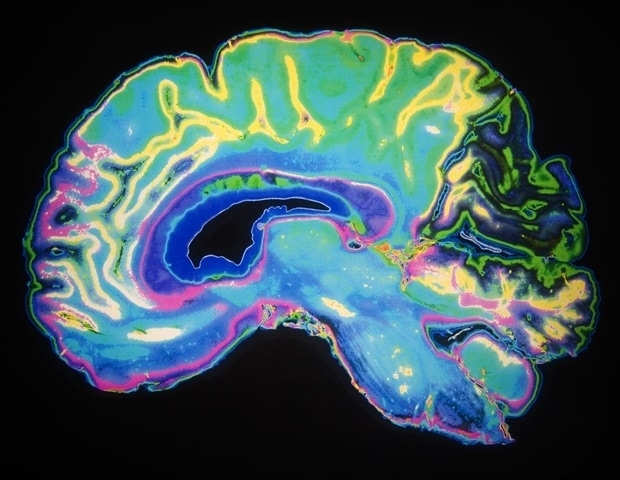Health
Scientists Reveal Neuron-Like Communication in Gut Health

A significant breakthrough in understanding gut health has emerged from researchers at Duke-NUS Medical School and Nanyang Technological University (NTU Singapore). They discovered a precise communication system in the gut involving support cells, known as telocytes, which utilize extensions resembling neurons to send signals directly to intestinal stem cells. This study, published in the journal Developmental Cell, challenges previous assumptions about gut repair and maintenance, potentially paving the way for improved treatments for conditions such as inflammatory bowel disease (IBD) and colon cancer.
The intestinal lining, one of the most dynamic tissues in the human body, renews itself every few days. This renewal is facilitated by a small group of stem cells located in tiny pockets called crypts. These stem cells divide and specialize to form various cell types necessary for maintaining gut health. Until now, it was believed that chemical signals, specifically Wnts, freely diffused through the tissue to reach these stem cells. This process raised questions about how such a random method could ensure timely and accurate delivery of essential signals.
Professor David Virshup, Director of the Programme in Cancer and Stem Cell Biology at Duke-NUS and a co-corresponding author of the study, explained, “We discovered that these signals aren’t just drifting through tissue. They’re being delivered with surprising precision from the niche to the stem cells by specialized cells or telocytes.” This finding parallels how neurons communicate in the brain and alters the understanding of cellular communication within the gut.
Telocytes stand out due to their ability to extend long, thin filaments known as cytonemes. These extensions directly connect to specific stem cells, facilitating targeted communication. Using advanced imaging techniques, including high-resolution fluorescence and electron microscopy, researchers observed that in the mouse intestine, telocytes employ cytonemes to transport Wnts directly to individual stem cells in the crypts. This neuron-like behavior in gut cells represents one of the clearest analogies between brain and gut function observed to date.
The study also revealed that the contact points between telocytes and stem cells resemble synapses, the connections between nerve cells. This precise mode of communication allows for the direct transport of Wnts to their intended targets. Assistant Professor Alexander Ludwig from the School of Biological Sciences at NTU Singapore noted, “This kind of direct, cell-to-cell communication highlights a new level of precision in how secreted molecules are delivered to their target cell.”
To delve deeper into the functionality of this communication system, the researchers examined the proteins that support the cytonemes. They identified two key proteins, KANK and Liprin, essential for the formation and operation of these filaments. Disruptions in these proteins resulted in the failure of cytonemes to form properly, impacting the Wnt transport mechanism. Dr. Gediminas Greicius, Principal Research Scientist from Duke-NUS and the study’s first author, emphasized the transformative nature of this discovery. “This system of targeted signaling was hiding in plain sight,” he stated. “Now that we see it, it reshapes our understanding of the biology of stem cells in the gut.”
While the study focused on healthy tissue, its implications extend far beyond. Disruptions in Wnt signaling have been linked to various forms of colon cancer. Additionally, impaired signaling may contribute to chronic inflammatory bowel diseases, such as Crohn’s disease and ulcerative colitis, which are increasingly prevalent in Singapore and the surrounding region.
Professor Patrick Tan, Senior Vice-Dean for Research at Duke-NUS, highlighted the broader significance of the discovery. “This finding could change how we approach tissue repair and regenerative medicine,” he stated. “If we can harness or restore this precise mode of signaling, it may enhance the effectiveness of stem cell therapies and help develop more targeted treatments for gut-related diseases.” This research exemplifies how fundamental scientific exploration can lead to impactful advancements in medical treatments.
In summary, the identification of this neuron-like communication system in the gut not only challenges existing paradigms but also offers promising avenues for future research and therapeutic strategies, particularly in the realm of regenerative medicine. As scientists continue to explore these discoveries, the potential for improved healthcare outcomes becomes increasingly tangible.
-

 Entertainment2 months ago
Entertainment2 months agoIconic 90s TV Show House Hits Market for £1.1 Million
-

 Lifestyle4 months ago
Lifestyle4 months agoMilk Bank Urges Mothers to Donate for Premature Babies’ Health
-

 Sports3 months ago
Sports3 months agoAlessia Russo Signs Long-Term Deal with Arsenal Ahead of WSL Season
-

 Lifestyle4 months ago
Lifestyle4 months agoShoppers Flock to Discounted Neck Pillow on Amazon for Travel Comfort
-

 Politics4 months ago
Politics4 months agoMuseums Body Critiques EHRC Proposals on Gender Facilities
-

 Business4 months ago
Business4 months agoTrump Visits Europe: Business, Politics, or Leisure?
-

 Lifestyle4 months ago
Lifestyle4 months agoJapanese Teen Sorato Shimizu Breaks U18 100m Record in 10 Seconds
-

 Politics4 months ago
Politics4 months agoCouple Shares Inspiring Love Story Defying Height Stereotypes
-

 World4 months ago
World4 months agoAnglian Water Raises Concerns Over Proposed AI Data Centre
-

 Sports4 months ago
Sports4 months agoBournemouth Dominates Everton with 3-0 Victory in Premier League Summer Series
-

 World4 months ago
World4 months agoWreckage of Missing Russian Passenger Plane Discovered in Flames
-

 Lifestyle4 months ago
Lifestyle4 months agoShoppers Rave About Roman’s £42 Midi Dress, Calling It ‘Elegant’









